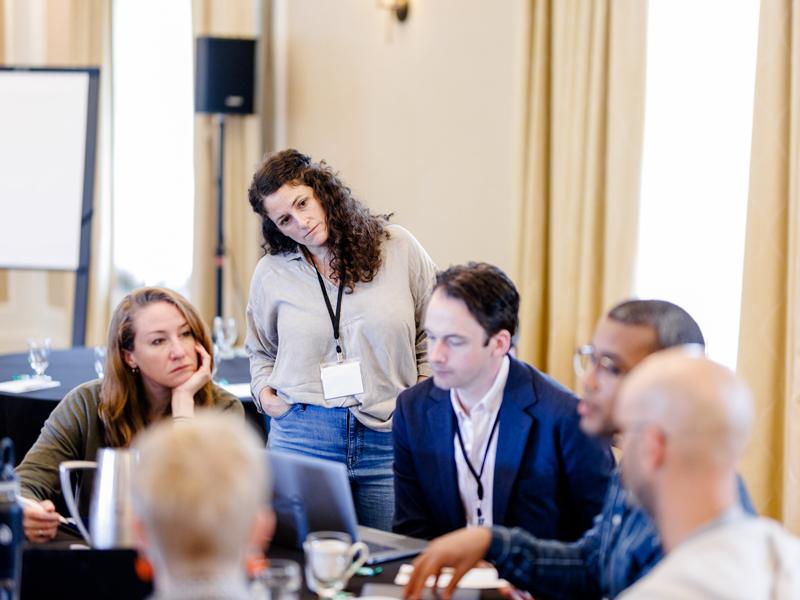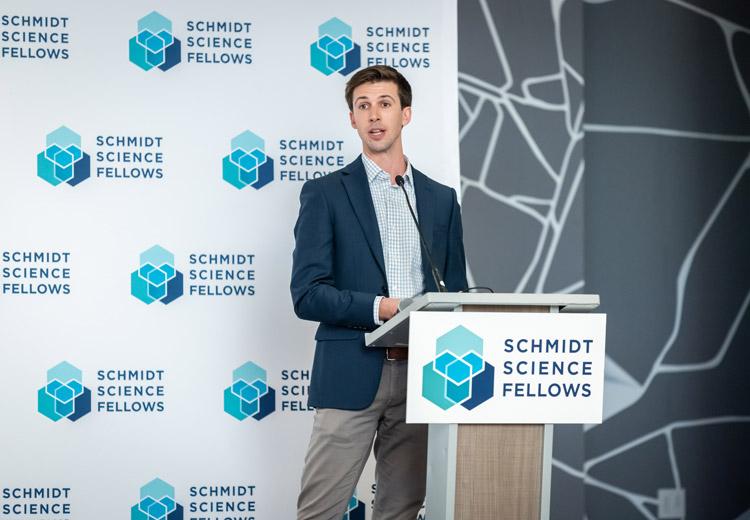
Where the boldest research ideas find a home
Interdisciplinarity
Sponsored by

Advice for bringing together multiple academic disciplines into one project or approach, examples of interdisciplinary collaboration done well and how to put interdisciplinarity into practice in research, teaching, leadership and impact

You may also like
Popular resources
Image credit: Josh Fee
Interdisciplinary science thrives when researchers are given the time, space and freedom to pursue their intellectual curiosity in environments where no question is considered off-limits. Those conditions are not always easy to find on campus, where incentive structures encourage specialisation, often leaving the big ideas on ice.
Rachel Parker, senior director of research and head of next-generation initiatives at the Canadian Institute for Advanced Research (CIFAR), says this has to change. She believes that organisations like CIFAR can play a vital role in supporting scientists by putting them in a room together and developing their most ambitious ideas – those that might have been too radical, or simply too interdisciplinary, to be entertained elsewhere.
“We want people to come with their earliest possible idea, something that is truly formative and is going to benefit from the collective knowledge around the table,” Parker says. “All CIFAR programmes are orientated around the next big idea, the next challenge, ones that are so complex that they necessitate a really broad constellation of people, an interdisciplinary perspective, in order to make progress on fundamental research.”
CIFAR facilitates interdisciplinary science through a number of initiatives. Its research programmes might involve a collaboration between up to 25 fellows, and operate on renewable five-year terms with no sunset clause in recognition that this is work that requires long-term commitment. “It takes a long time for these highly interdisciplinary groups to build a shared language, a shared sense of direction and trust across the group,” says Parker. CIFAR offers a space for ideas that might not fit the traditional disciplinary mould in other academic contexts. Its meetings are hosted under the Chatham House Rule, encouraging open discussion.
CIFAR supports early-career researchers through its Azrieli Global Scholars Programme, which grants junior faculty C$100,000 (£58,000) over two years, in addition to the opportunity to work alongside established researchers. The programme also provides seed funding via Catalyst Grants, which further enable early-career researchers with interdisciplinary projects to take bigger risks. “It has to be an idea that has no obvious home,” Parker says. “We have a couple of examples where those have spun out into half-a-million-dollar grants further down the line. It doesn’t happen all the time, but when it does, it enables these researchers to further their impact and their careers. It’s rewarding to know that CIFAR provided the space for that conversation to even happen in the first place.”
In addition to its Azrieli Global Scholars Programme, CIFAR’s Child and Brain Development programme piloted a training scheme offering mentorship to late-career graduate students and postdoctoral students, exposing them to the reality of life as an interdisciplinary scientist, in which there is always something new to learn.
“They get exposure to how their mentors are asking questions when they don’t understand something,” Parker says. “That is also crucial: being willing to show your vulnerabilities, that you have something to learn from another discipline.”
CIFAR partnered with Schmidt Science Fellows in 2023 to bring together a group of CIFAR-Azrieli Global Scholars and Schmidt Science Fellows to explore opportunities for interdisciplinary collaboration.
Times Higher Education has partnered with Schmidt Science Fellows to develop a new ranking measuring universities’ contribution to interdisciplinary science. Find out how to participate.
Find out more about Schmidt Science Fellows.
Interdisciplinarity
Sponsored by
